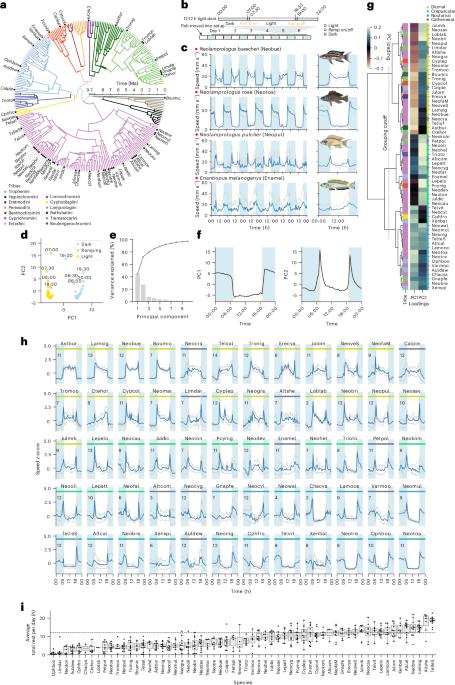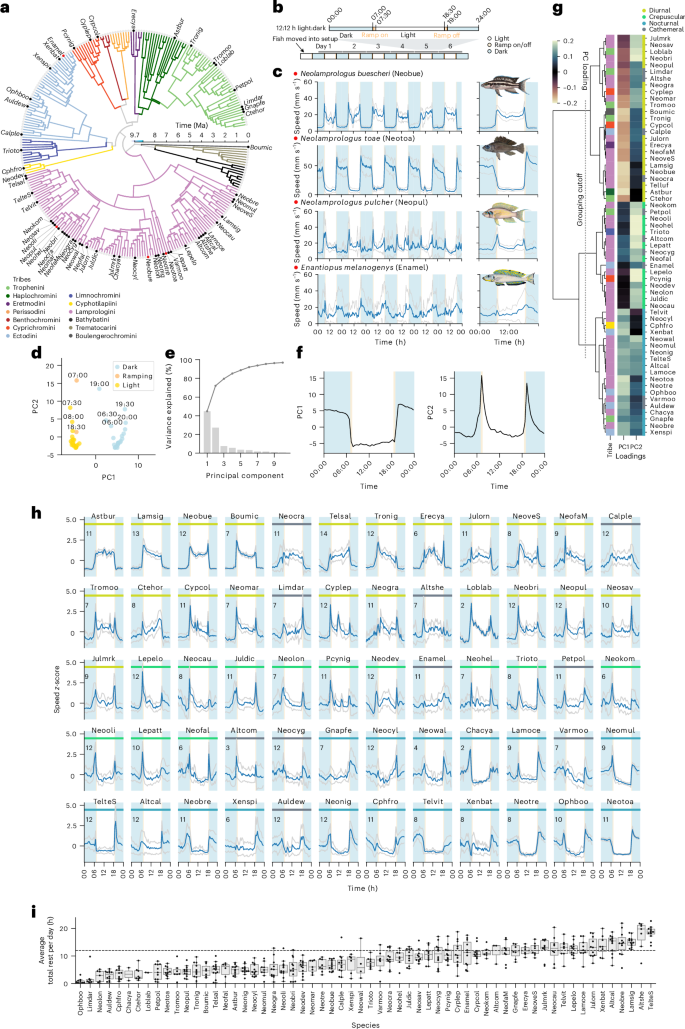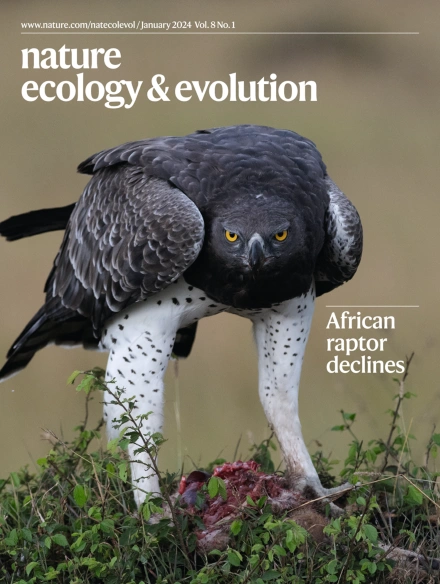Widespread temporal niche partitioning in an adaptive radiation of cichlid fishes
IF 13.9
1区 生物学
Q1 ECOLOGY
引用次数: 0
Abstract
The partitioning of ecological niches is a fundamental component of species diversification in adaptive radiations. However, it is currently unknown if and how such bursts of organismal diversity are influenced by temporal niche partitioning, wherein species avoid competition by being active or sleeping during different time windows. Here we address this question through profiling temporal activity patterns in the exceptionally diverse fauna of cichlid fishes from the African Lake Tanganyika. By integrating week-long longitudinal behavioural recordings of over 500 individuals from 60 species with eco-morphological and genomic information, we provide two lines of evidence that temporal niche partitioning occurs in this massive adaptive radiation. First, Tanganyikan cichlids exhibit all known circadian temporal activity patterns (diurnal, nocturnal, crepuscular and cathemeral) and display substantial interspecific variation in daily amounts of locomotion. Second, many species with similar habitat and diet niches occupy distinct temporal niches. Moreover, our results suggest that shifts between diurnal and nocturnal activity patterns are facilitated by a crepuscular intermediate state. Genome-wide association studies indicate that the genetics underlying activity patterns is complex, with different clades associated with different combinations of variants. The identified variants were not associated with core circadian clock genes but with genes implicated in synapse function. These observations indicate that temporal niche partitioning may have contributed to adaptive radiation in cichlids and that many genes are associated with the diversity and evolution of temporal activity patterns. An analysis of behavioural, eco-morphological and genomic data in 60 species of Lake Tanganyika cichlids reveals a remarkable diversity of temporal activity patterns across species, suggesting that temporal niche partitioning may have played a role in the adaptive diversification of this group.


慈鲷适应辐射中广泛的时间生态位分配
生态位的划分是适应辐射中物种多样化的基本组成部分。然而,目前尚不清楚这种生物多样性的爆发是否以及如何受到时间生态位划分的影响,其中物种通过在不同的时间窗口活动或睡眠来避免竞争。在这里,我们通过分析非洲坦噶尼喀湖异常多样化的奇鱼动物群的时间活动模式来解决这个问题。通过整合来自60个物种的500多个个体的长达一周的纵向行为记录以及生态形态学和基因组信息,我们提供了两种证据,证明在这种大规模的适应性辐射中发生了时间生态位划分。首先,坦噶尼干慈鲷表现出所有已知的昼夜时间活动模式(白天、夜间、黄昏和清晨),并且在每日运动量上显示出大量的种间差异。其次,许多具有相似生境和饮食生态位的物种占据不同的时间生态位。此外,我们的研究结果表明,昼夜活动模式之间的转变是由黄昏中间状态促进的。全基因组关联研究表明,潜在活动模式的遗传学是复杂的,不同的进化支与不同的变体组合相关。鉴定的变异与核心生物钟基因无关,但与突触功能相关的基因有关。这些观察结果表明,时间生态位划分可能有助于慈鲷的适应性辐射,许多基因与时间活动模式的多样性和进化有关。
本文章由计算机程序翻译,如有差异,请以英文原文为准。
求助全文
约1分钟内获得全文
求助全文
来源期刊

Nature ecology & evolution
Agricultural and Biological Sciences-Ecology, Evolution, Behavior and Systematics
CiteScore
22.20
自引率
2.40%
发文量
282
期刊介绍:
Nature Ecology & Evolution is interested in the full spectrum of ecological and evolutionary biology, encompassing approaches at the molecular, organismal, population, community and ecosystem levels, as well as relevant parts of the social sciences. Nature Ecology & Evolution provides a place where all researchers and policymakers interested in all aspects of life's diversity can come together to learn about the most accomplished and significant advances in the field and to discuss topical issues. An online-only monthly journal, our broad scope ensures that the research published reaches the widest possible audience of scientists.
 求助内容:
求助内容: 应助结果提醒方式:
应助结果提醒方式:


